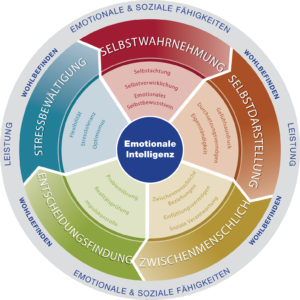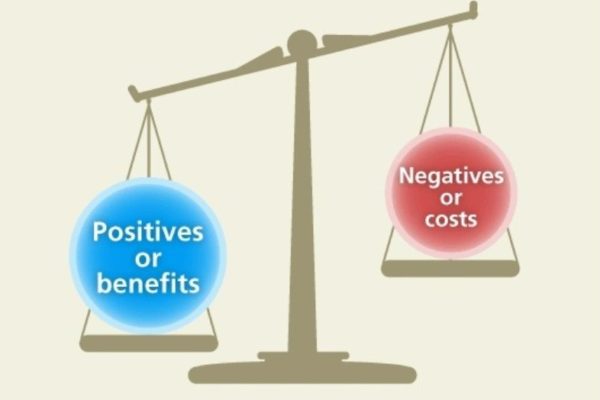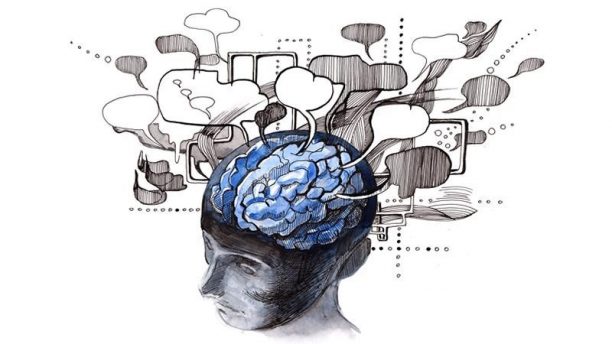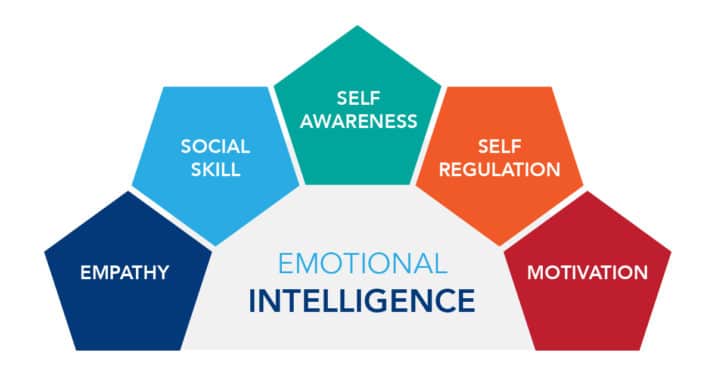The buyer’s experience with a business must be emotionally impactful in order to make a sale. Leaders that are emotionally attuned will inspire employees and help discover and develop their talents. Front-line staff spend the most time with your buyers, so they are essential for delivering excellent customer service. Thus, there is tremendous value in taking steps to make sure your organization is emotionally intelligent.
Unfortunately, there is so much information about emotional intelligence (EI) that it can be hard to figure out how to apply it to your business. In this guide, I will teach you everything you need to know about EI and give you the ultimate guide for creating an emotionally intelligent organization.
What Is Emotional Intelligence and Why Is It Important?
If you do a quick Google search for EI, it’s overwhelming to sift through the endless results. Figuring out where to begin can be challenging.
Similarly, there are a lot of different ways to measure EI, and each one varies depending on which context you plan to measure EQ.
It definitely requires a lot of mental fortitude to read through all the research articles just to figure out which questionnaire measures EQ in which situation.
To keep things simple, I’ll use the Bar-On model which sees
EI as a set of emotional and social skills (competencies) that influence intelligent behavior.
There are two kinds of intelligence that relate to the five EI dimensions.
- The first kind of intelligence is intrapersonal intelligence, which means understanding and interpreting your own feelings and thoughts.
- The second kind of intelligence is interpersonal intelligence, and it’s about understanding and responding to the emotions of other people.
An emotionally intelligent person can understand their own and the emotions of others.
Fortunately, anyone can develop their EI skills at any age.
EQ-i 2.0 Framework


The Bar-On model of EI has 15 different EQ skills that fall into five different categories. The five categories include Self-Perception, Self-Expression, Interpersonal, Stress Management, and Decision Making.
Intrapersonal intelligence is essential for the first two domains (Self-Perception and Self-Expression); while the remaining three domains (Interpersonal, Stress Management, and Decision Making) require interpersonal skills.
Self-Perception
how you think about your own strength and confidence (Self-Regard), how persistent you are in pursuing meaningful goals (Self-Actualization), how you understand your own emotions, and how your emotions affect your thoughts and behaviors (Emotional Self-Awareness).
Self-Expression
how you show the world how you feel inside (Emotional Expression), how freely you can say what you really think and feel (Assertiveness), and whether you aren’t emotionally dependent on others (Independence).
Interpersonal
how well you can build and keep relationships (Interpersonal Relationships), how well you can understand what the other person is feeling (Empathy), and how much care you show for others, your team, or the organization (Social Responsibility).
Decision-Making
being aware of how emotions affect decisions (Problem Solving), stay objective (Reality Testing), and resist the urge to act until all of the options are considered (Impulse Control).
Stress Management
how well you can adapt to changes (Flexibility), deal with stressful or difficult situations (Stress Tolerance), and keep a positive outlook on life even when things go wrong (Stress Tolerance) (Optimism).
Well-Being Indicator
(Happiness) measures how happy and satisfied you are with your life.


People who take the EQ-i 2.0 or EQ 360 can get scores in all 15 of the EQ competencies with incredible accuracy. It shows where employees, teams, and leaders score on each EQ skills compared to the average population.
A trained EQ expert will be needed to help interpret each score because it it can be a little complex.
Using EI in a business setting is incredibly valuable. For instance, over 80% of the skills that separate top performers from average performers are found in the EI domains.
This makes sense – businesses are made of people. Your clients, vendors, investors, employees, and stakeholders all have emotions, which means managing emotions well is essential.
As you travel up the hierarchy, EI becomes even more important. Executives with higher EI are more likely to be highly profitable.
It literally pays to promote EI within your business.
Check out my blog if you would like to read more about EI’s relationship with performance, leadership, and employee engagement.
Creating an Emotionally Intelligent Organization
So, what exactly is an EIO? It means promoting EQ skills in every part of your business until they become part of the culture. Start at the top and work your way down. The CEO must fully believe in the value of EI and model this way of being to employees.
- An emotionally intelligent CEO knows their strengths and is perfectly accepting of their weaknesses (Self-Regard).
- They know how to manage and use the right emotions to make better decisions (Problem-Solving)
- How they react to stress and have various ways to relieve stress (Stress Tolerance).
- Finally, they care about and try to help their employees reach their full potential (Social Responsibility).
These are the skills you want your leaders to embody as well. Only then can leaders help employees develop these traits, which will then spread throughout the business culture.
It’s important to point out that this transfer will only work if you take the time to get all of the leaders buy-in.
If one leader doesn’t see the value in developing EI skills, this could impede a departments progress, which could make it more difficult to work together.
Now that you have a specific goal to work toward, here are some steps you can take to start.
Steps in Becoming an Emotionally Intelligent Organization
Step 1: Self-Awareness
You need to figure out your EI scores in each EQ competency to get a good idea of where you are and how to improve.
Self-awareness is the cornerstone of emotional intelligence, and learning about your EI strengths and opportunities is a big part of that.
If you don’t know who you are, you can’t accurately figure out how you feel and what caused you to feel that way. It will also be challenging to learn how to express your emotions and have empathy for others.
A great way to learn more about yourself is through journaling.
For example, there are workbooks that help you clarify who you are as a person, what you value, and your vision for your future. I highly recommend The Life Examined Workbook: A Bold Journey Towards Knowing Yourself by Brittany Salsman.


Learning your EQ skills can give you great ideas for new ways to use them.
For instance, you might start a mentorship program at work because you have a high EI score in Social Responsibility and want to give back.
Similarly, figuring out where you can grow can help you set more specific self-improvement goals.
When you work on your EI skills, your direct reports will see a change. This is a great chance to model the standard you are striving to achieve, which will help set the tone for promoting EI within the culture.
This first step is very important because you must become aware of yourself before you help others improve their EI.
Step 2: EQ Profiling
After you become aware of your own strengths and weaknesses, the next step is to figure out which EQ skills will result in star performance for each job role.
Let’s say that you want to encourage more innovative leadership in your business. Innovative leaders are those who:
- Set high standards for their employees and inspire them to exceed expectations (Self-Actualization)
- consider different ideas from different angles (Independence)
- reframe how they think about problems and come up with new ways to solve them (Problem-Solving).
- also speak their minds and decisions respectfully (Assertiveness)
- think outside the box (Flexibility)
- keep their spirits up when setbacks happen (Optimism).
Creating a benchmark for each job role can help clearly define training needs and that initiatives aim at the right areas of development.


A great example is using EI-based interview questions. This technique can reduce turn over
Instead of focusing on traditional methods of interviewing, such as focusing on experience and IQ; EI-based questions assess what each candidates value, their motivations, and how well they fit into the job.
There is a better chance of spotting a poor fit early on if you ask more EI-based during interviews.
Similarly, you can use EI to hire employees who already have the potential to become star performers. Serious applicants can take the EQ-i 2.0 and compare their scores to your top performer in that job role.
Using EI during training, hiring, and job profiling can help your business save thousands of dollars from turnover.
Step 3: Reward EI to Ensure Implementation
Lastly, you need to do to ensure EI is embedded in your culture is to encourage and reward employees who regularly practice EI skills.
Leaders will only be able to foster an emotionally intelligent culture if they consistently acknowledge and support employees who are receptive to the change.
Leaders might want to think about promoting EI skills by initiating a performance management system that looks for and rewards EI skills in a specific job role.
For instance, it was found that intrinsic motivation has a more long-term effect on EI implementation than extrinsic motivation.
Leaders can help motivate their employees by tying rewards to employee values. This requires an authentic leader who genuinely wants to learn more about employees.
Leaders will find that just the act of wanting to learn more about employees’ will likely make them want to go above and beyond.
If leaders consistently support and reward employees that practice EI skills, the cultural norms will support EI as a way of work life.
Conclusion
EI is an essential soft skill that is present in every top-performing organization.
This guide has told you everything you need to know about EI and why it’s important for business.
The steps in this guide are a great place to start when you want to start incorporating EI into your business.
Leaders must first know who they are and what they value before this guide can help them.
Only with this knowledge will they be able to support employee EI development.
Every leader must see the value of implementing EI in the culture.
This is done by making a business case of EI’s positive effects on leadership, performance, and revenue.
If you would like guidance on how to make a business case for EI or have questions about taking the EQ-i 2.0, please leave a comment.
You can also check out my podcast that has applicable strategies that you can start implementing today to work towards being an emotionally intelligent organization.
Bianca Cardenas, M.S., Ph.D., is a Fellow in Executive Assessment and Consulting with Leadership Worth Following. Dr. Bianca Cardenas empowers leaders to transcend competition by helping them unlock their people's potential.






















